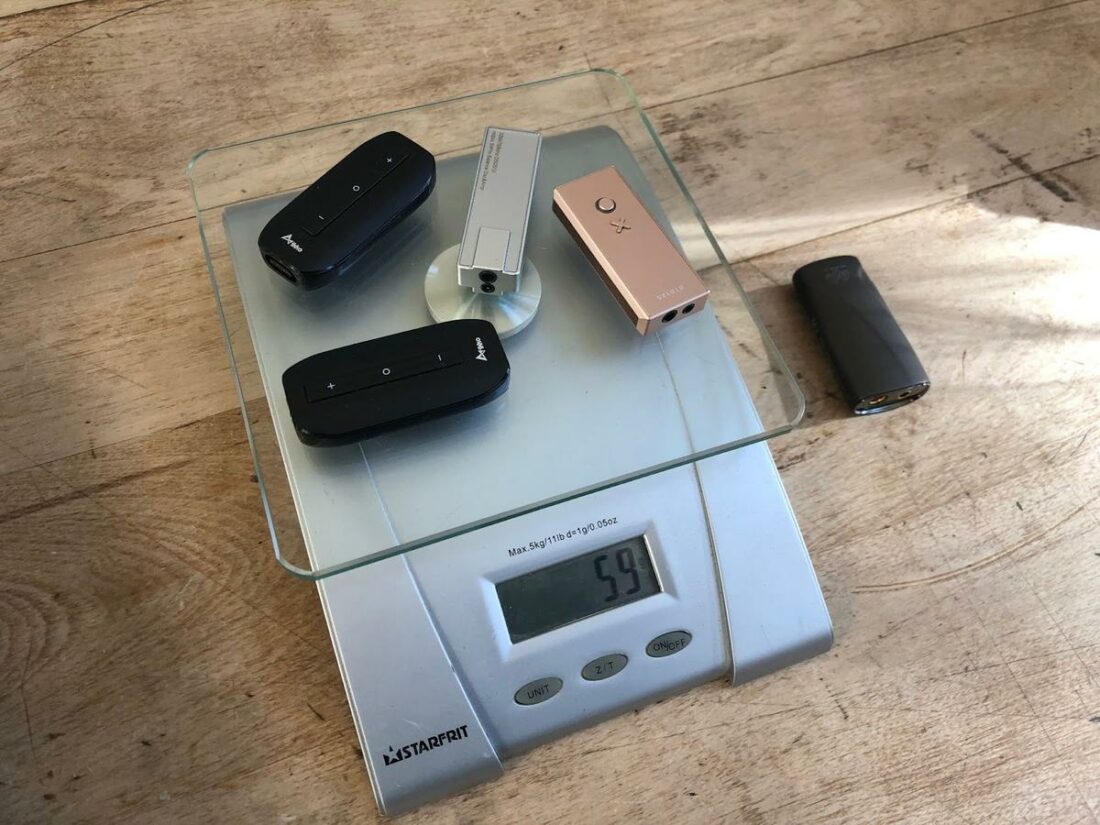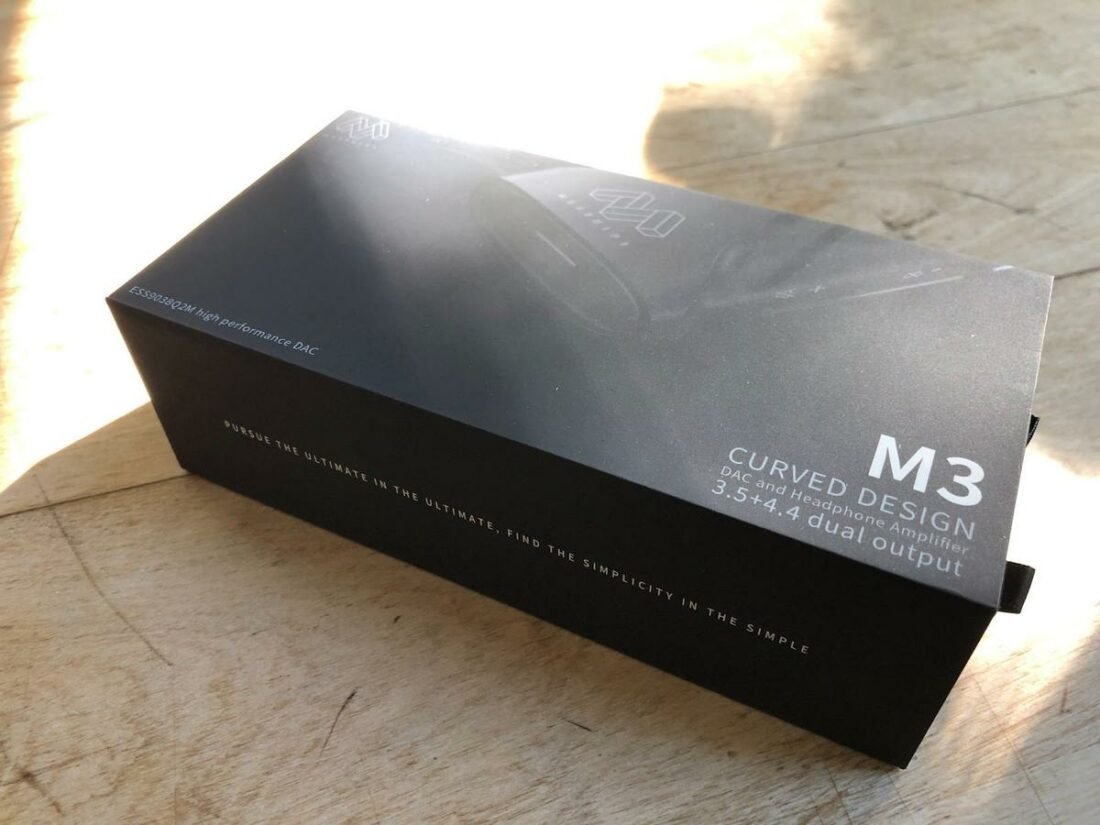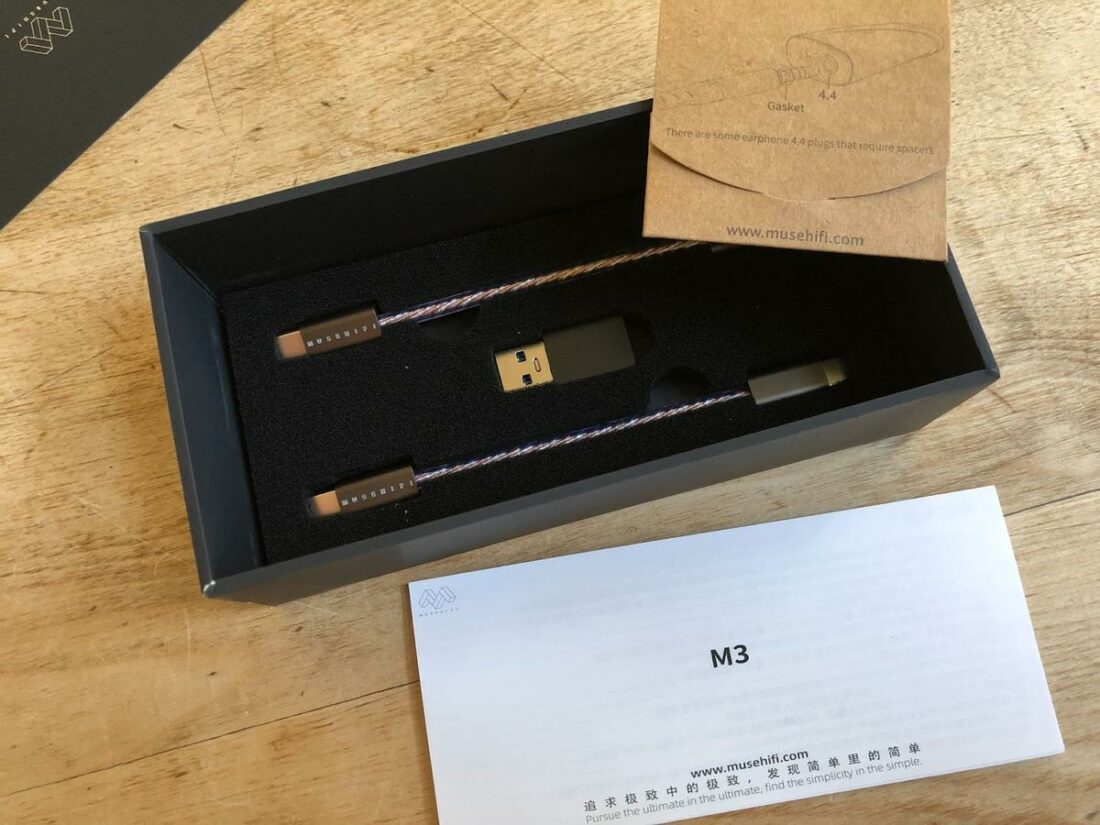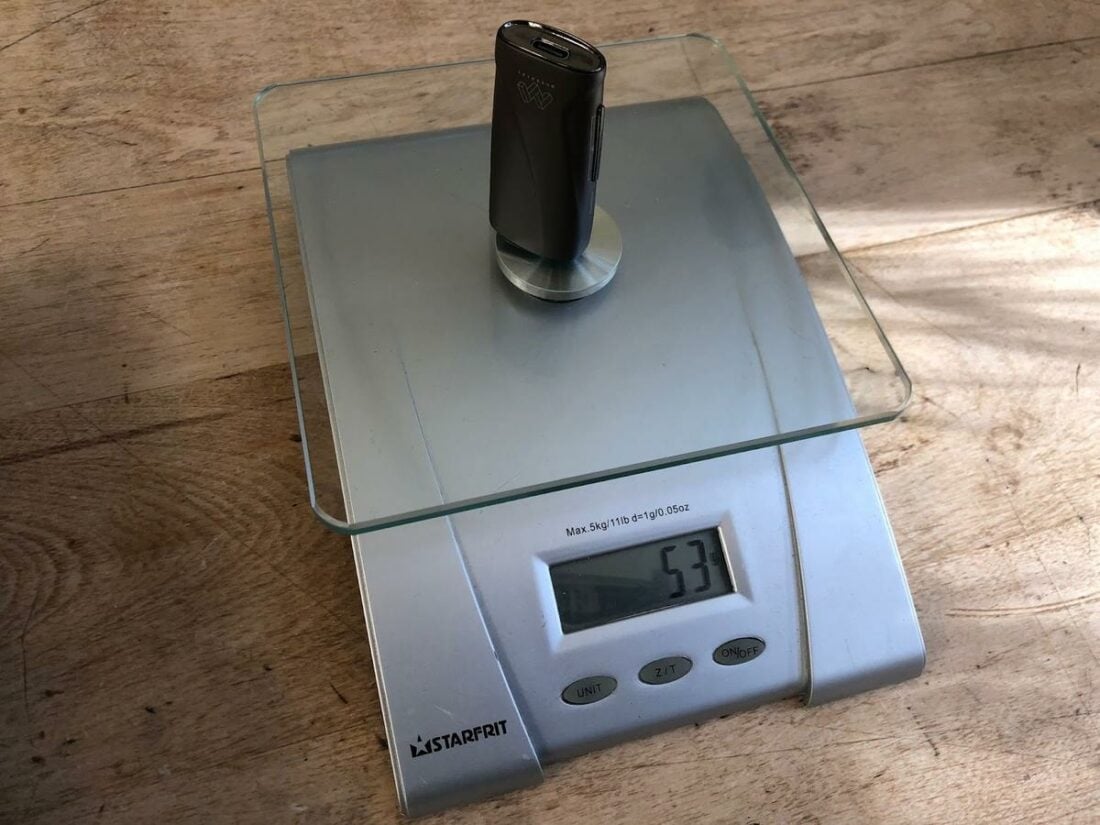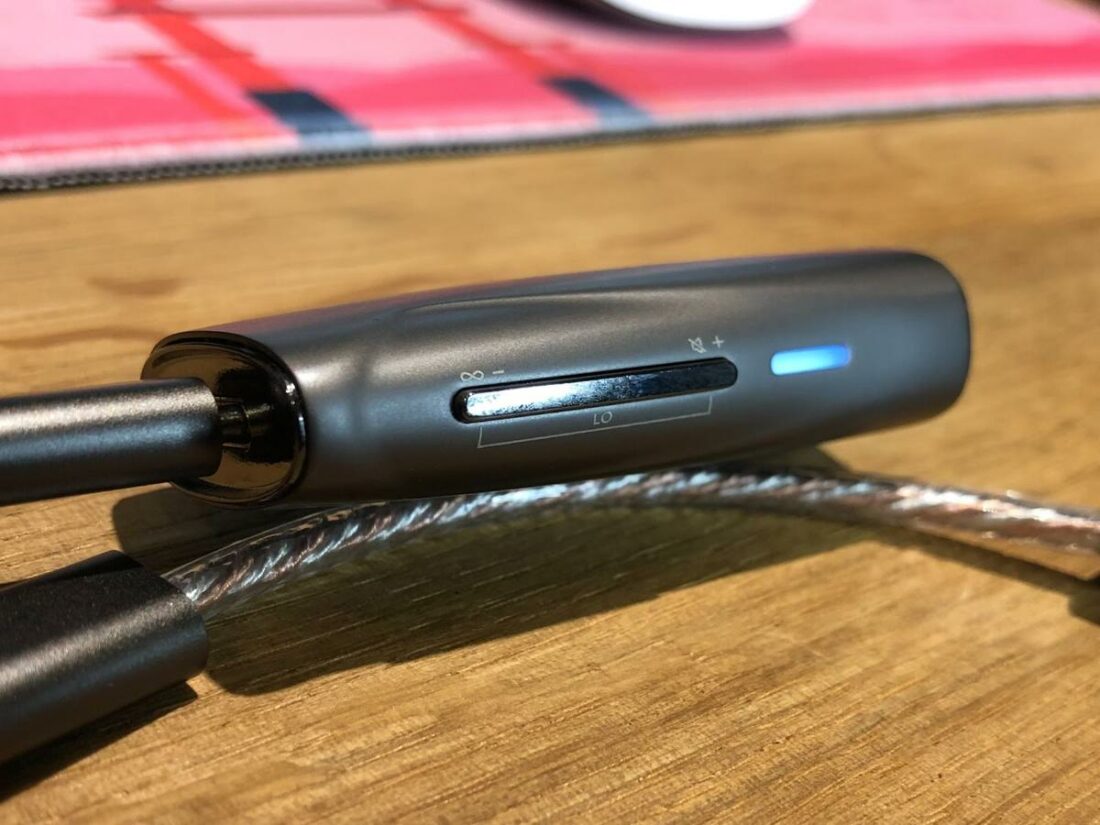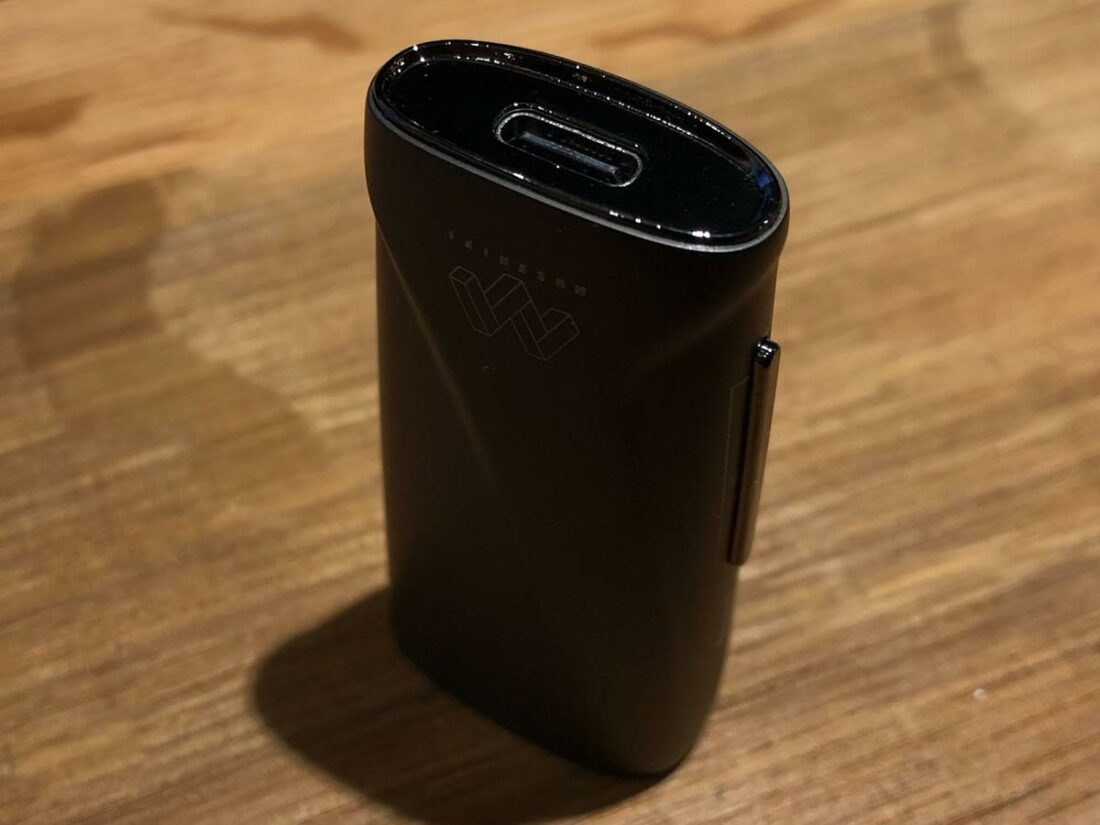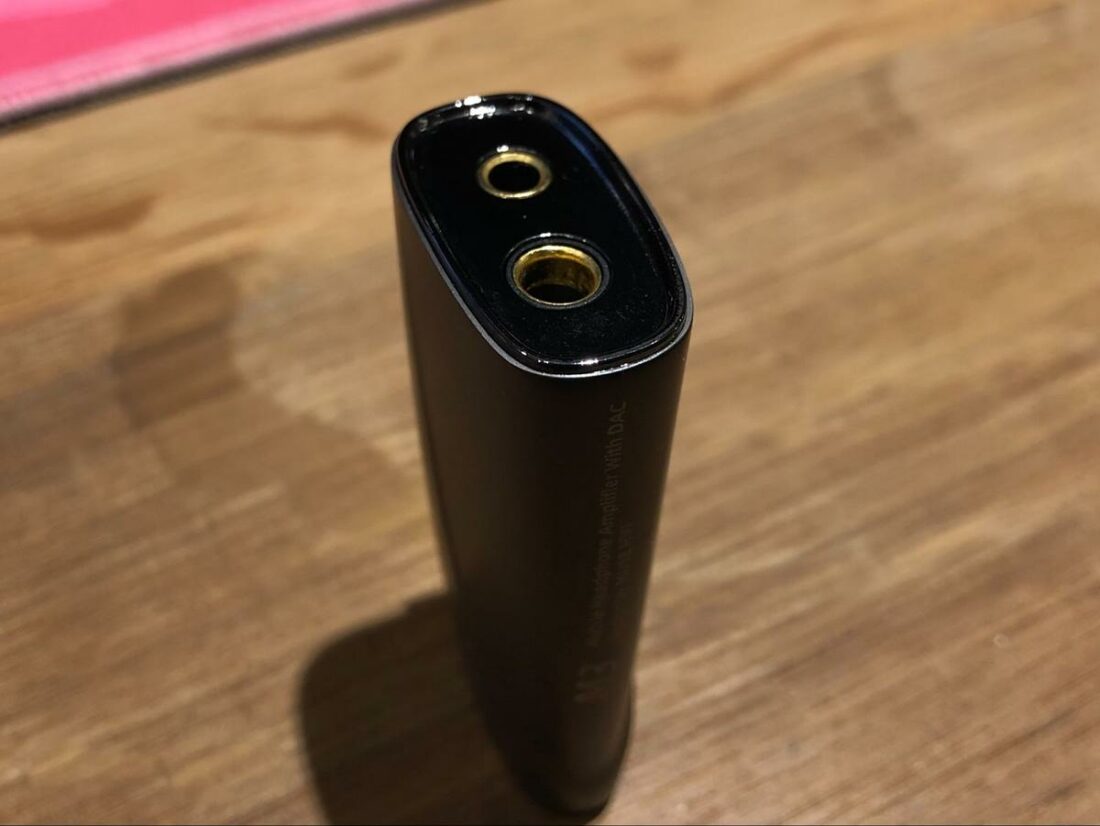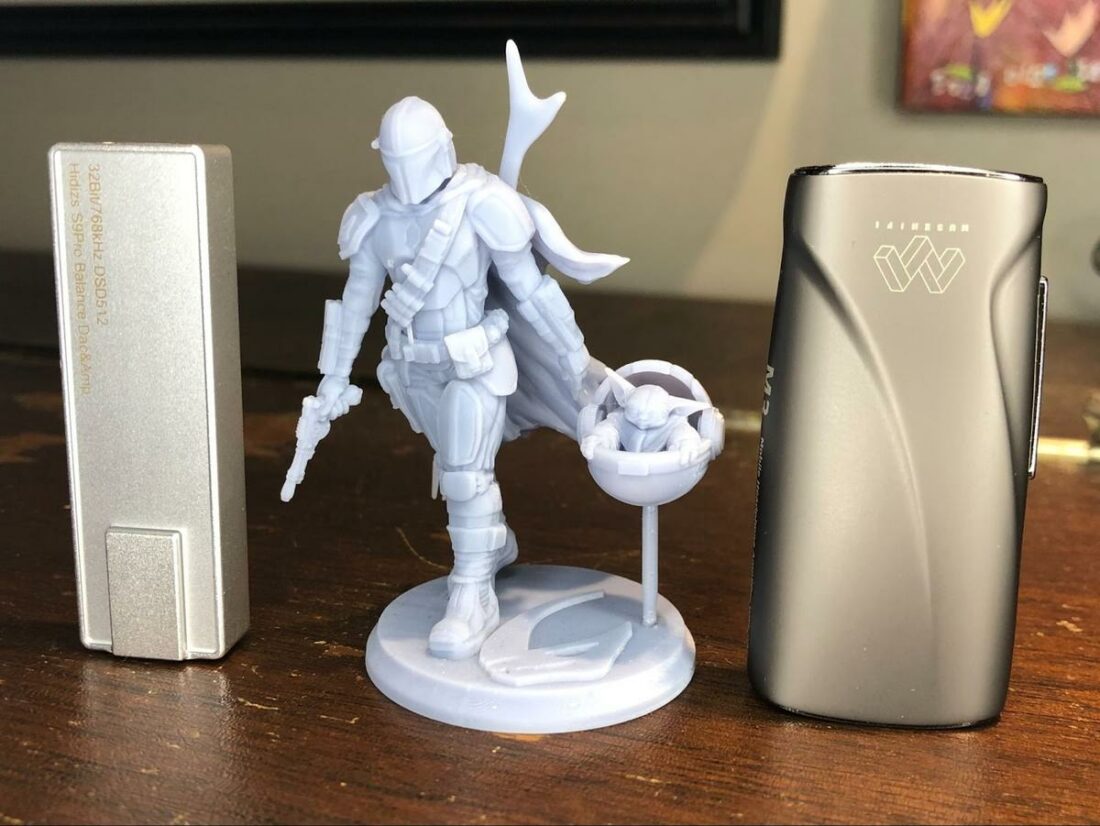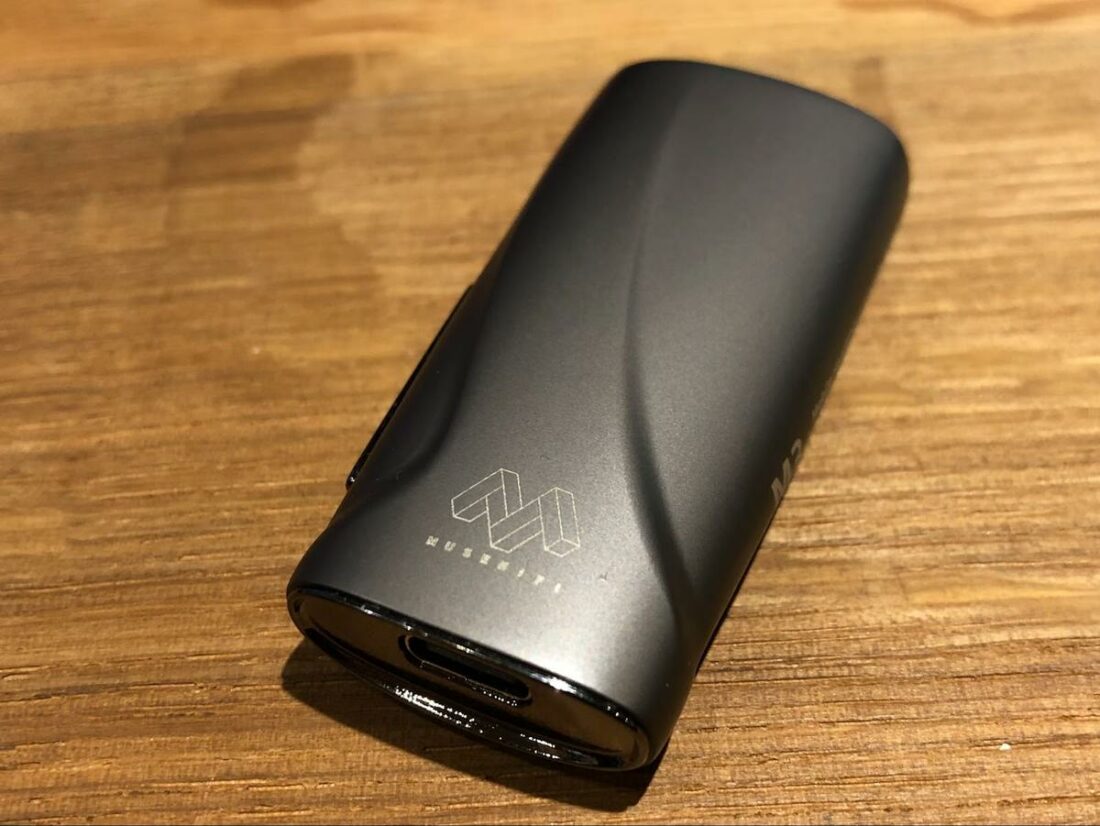DAC/amp dongles seem a dime a dozen these days, with new ones appearing weekly. Especially those based on the near-ubiquitous ESS Sabre chipset. So, when you are late to the party, how does a new company make its dongle stand out? Many incorporate both a balanced and single-ended output. Some, like the soon-to-be-reviewed Hidizs XO, use multicolored LED lighting. Some, like the Shanling UA5, are stuffed with features like an internal battery and OLED screen. MUSE decided to go a different route with their newest dongle offering. In many ways, the M3 sports a typical dongle design – a small oblong aluminum brick with a USB-c port on one end and headphone jacks on the other. It’s got a couple of small volume control buttons and an indicator LED. It’s priced in the middle of the pack, near USD $150. But what makes it different? Sure, the M3 has rounded edges and an interesting sculpted profile. But upon first encounter, what really stands out is the weight. This thing is heavy! Grab your phone and favorite pair of IEMs, and let’s see if more than mass makes the M3 marvelous. Does it offer anything else that can grab our interest?
Company Overview
The MUSE HiFi and Muse Acoustics brands belong to Shenzhen Yunke Acoustic Technology Co., Ltd. located in the Longgang District, Shenzhen, China. They describe themselves as “an innovative technology enterprise integrating the research and development, production and sales of HiFi audio equipment,” committed to “the pursuit of the ultimate product, and the simplicity and purity of shopping for consumers.” MUSE has released the portable M1 DAC/amp, Color Cow cable, Power planar magnetic IEMs, and ME1 hybrid IEMs.
Technical Specifications
Form: Portable, DAC, Amp DAC Chipset: ESS Sabre ES9038Q2M Amp Chipset: ES9603Q USB Chipset: SA9227 Resolution: PCM 32Bit/384kHz, DSD 256 SNR: 122dB ([email protected]) Power: 3.5mm Single Ended: Under 2 V rms, 4.4mm Balanced: 2 V rms Line-Out: 2 V rms Max Removable Cable: Y, USB-c to USB-c, USB-c to Lightning Output Jack: 3.5mm, 4.4mm Weight (g): 53g Size: 59.5mm x 29.5mm x 15.5mm
Packaging
The M3 comes in a fairly large black cardboard box for a device of this type. Slide off the top, and you’ll find the M3 ensconced in foam. Below are the two cables and a USB-c to USB-a adapter. As far as I can determine, the two cables are supposed to be a USB-c to USB-c OTG cable and a USB-c to Lightning cable. Unfortunately, my M3 was bundled with two identical USB-c to USB-c cables.
In the box
MUSE HiFi M3 DAC/amp Lightning to USB-C cable USB-c to USB-a adapter Instruction manual 4.4mm rubber spacers
Cable
The inclusion of both USB-c OTG and USB-c to Lightning cable is great, saving iPhone users an additional purchase! (If you receive it, of course.) Both cables are 120mm long and appear high quality with color-matched aluminum ends and a clear sheath showing off the silver and copper weave.
Design
Weight gives the impression of intrinsic worth, and the curved silhouette of the M3 feels terrific to hold. I love the body’s matte gunmetal-colored finish, although I’m less enamored with the look of the shiny metal ends – they don’t quite match the body. The top contains the 3.5mm and 4.4mm jacks, while the USB-c port is centered in the bottom. The shiny silver volume rocker button is a bit of a disappointment as it feels inexpensive and plastic. Hold both ends of the button (vol – and vol +) to enable the fixed line out mode. Hold the volume up end of the button to pause playback on the source. The white LED is a 7mm bar above the multi-function button. The LED function differs from most dongles, which tend to change color to reflect the file type or bit rate being played. For the M3, the single white LED flashes when powered on to indicate approximate volume (1 flash <10, 2 flashes 10-20, 3 flashes 20-30, 4 flashes 30-40, 5 flashes 40-50, 6 flashes maximum volume). Not entirely intuitive, I’m afraid. When line-out mode is selected, the LED will stay lit. Additionally, by holding the volume down button, the user can switch between 7 DAC digital filters, and the white LED flashes to indicate the selected filter mode. With extended use, the aluminum body gets warm, but not significantly, and the battery drain to the source device doesn’t seem excessive.
Internals
The M3 uses the ESS Sabre ES9838Q2M DAC chip supporting up to 32-bit/384kHz and DSD256 decoding. The M3 reportedly employs dual ESS ES9603Q opamps for amplification. There are scant details for this opamp chip, and specs such as distortion are not provided. 60 discrete volume steps provide very good graduated control. Upon power off, the M3 remembers the previous volume level – which is handy. Volume is adjusted on the M3 separate from the source volume, so you can set the output on your phone to your maximum desired level and use the M3 to adjust from there.
MUSE HiFi M3 Sound
The M3 delivers what I want in a portable DAC/amp dongle. A clean, silent background with sensitive sources coupled with enough output power to adequately drive anything up to medium-efficiency full-sized headphones. At higher output levels required to make less-efficient full-sized cans loud, the M3 remains well composed. Compared to the lowly but surprisingly competent Apple 3.5mm dongle, the M3 delivers sound with more authority and dynamics. Overall, the music remains natural sounding, but the presentation has a bit more oomph from the M3. Bass punches with just a touch more force. To be fair, there is no huge difference in performance between the M3 and another well-regarded ESS ES9838Q2M portable DAC/amp, the Hidizs S9 Pro, and both are great options. The S9 Pro does offer higher decoding capabilities (32/768), but its smaller size, lighter weight, or 2.5mm balanced socket may be enough to sway your purchase decision. The M3 is a solid performer and sounds balanced and natural. It is perhaps slightly warmer and softer sounding than the S9 Pro, but maintains good resolution and doesn’t seem veiled or lacking in detail presentation.
Where to Buy
Conclusion
The M3 DAC/amp dongle is a solid contender, but is it really special enough to stand out? It’s well made and heavy, but the button feels a touch cheap, and the LED indicator is inscrutable without the instructions. However, the 60-step volume control is terrific. Sound quality is all you can expect for a dongle DAC/amp at this price point, and I appreciate a silent background and enough power for most headphones. Once you familiarize yourself with its unique control scheme, the M3 delivers in a no-nonsense fashion, and I expect purchasers will be very satisfied. If pocket space is at a premium, some may be turned off by the size and weight, but any everyday-carry pocketknife or mini-flashlight lovers will find the M3 a familiar addition.

